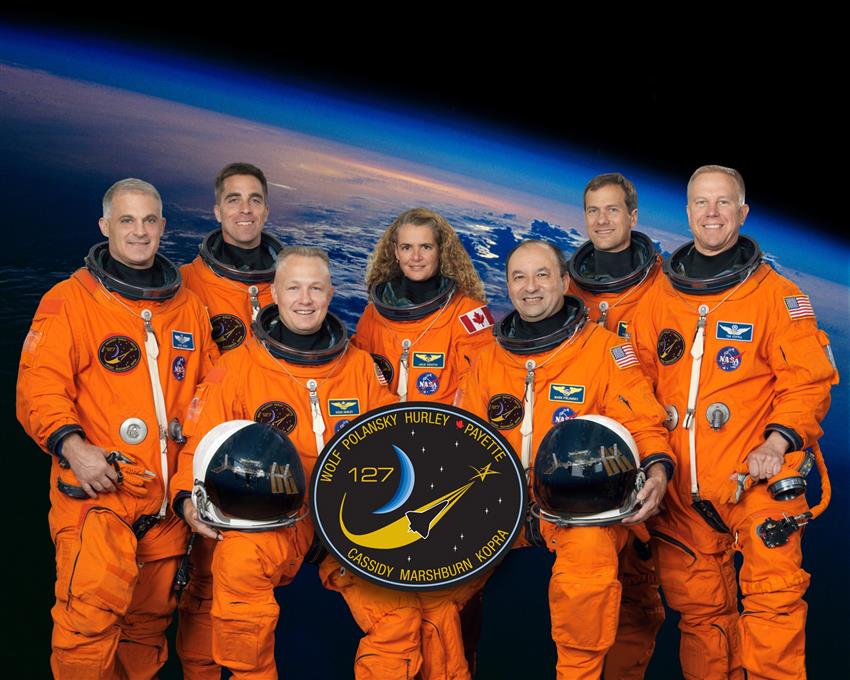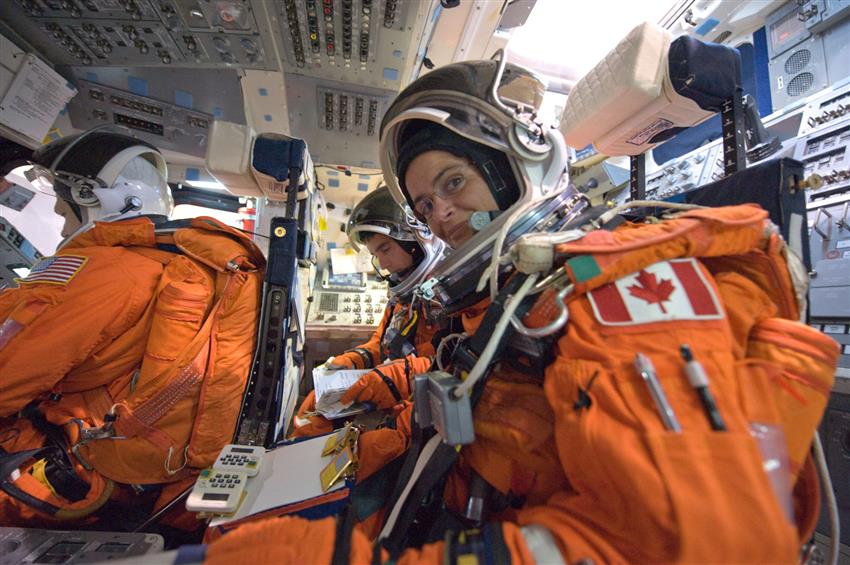Mission STS-127

Mission description

Text version
This patch commemorates Julie Payette's second spaceflight and her participation as mission specialist on mission STS-127 to the International Space Station (ISS).
The central element is the Earth seen from space, in all its magnificent beauty.
The arm comprised of bold electronic circuitry, represents the strength of Canadian space technology including space robots like Canadarm2 and Dextre. The circuitry spelling out Julie Payette's name reflects her background in electrical and computer engineering, as well as her role as flight engineer and robotics operator on the mission.
The shining stars embody the six other mission crew members.
It is however, the Earth that captures our ultimate attention. Space exploration provides humanity with a unique and privileged vantage point of our blue planet, reminding us that we must work together to preserve our shared home. Humanity's symbiotic relationship with Earth is reflected in the hand gently curved toward our planet.
Patch STS-127. (Credit: Canadian Space Agency)
Launch
Date: July 15, 2009
Time: 6:03:10 p.m. ET
Landing
Date: July 31, 2009
Time: 10:48:08 a.m. ET
Site: Kennedy Space Center
Mission duration: 15 days 16 h 44 min 58 s
Flight number: STS-127
Orbiter vehicle: Endeavour
On , Julie Payette flew aboard Space Shuttle Endeavour on Mission STS-127 to the International Space Station (ISS), the 29th Shuttle trip to the Earth-orbiting laboratory. She served as Flight Engineer/Mission Specialist 2.
The main objective of this 16-day mission was to deliver the last components of the Japan Aerospace Exploration Agency's Kibo module to the ISS.

Mission STS-127 crew
From left to right. Front row: Doug Hurley and Mark Polansky. Back row: Dave Wolf, Christopher Cassidy, Julie Payette, Tom Marshburn and Tim Kopra. (Credit: NASA)
During the mission, Julie Payette made history as the first Canadian astronaut to operate three robotic arms in space – Canadarm, Canadarm2, and the Japanese Experiment Module Remote Manipulator System.
Payette also took part in the first Canadian astronaut rendezvous in space when she met up with fellow Canadian Bob Thirsk, who arrived at the ISS in May 2009 aboard a Russian Soyuz capsule as a crewmember of Expedition 20/21.
A number of Canadian experiments managed by the Canadian Space Agency were delivered by STS-127. Some were physical science experiments to help researchers understand the diffusion of liquids, while others were biological, looking at expanding understanding of how blood pressure and fainting affect both space travellers and people back on Earth.

Julie Payette as a post flight engineer / specialist. (Credit: NASA)